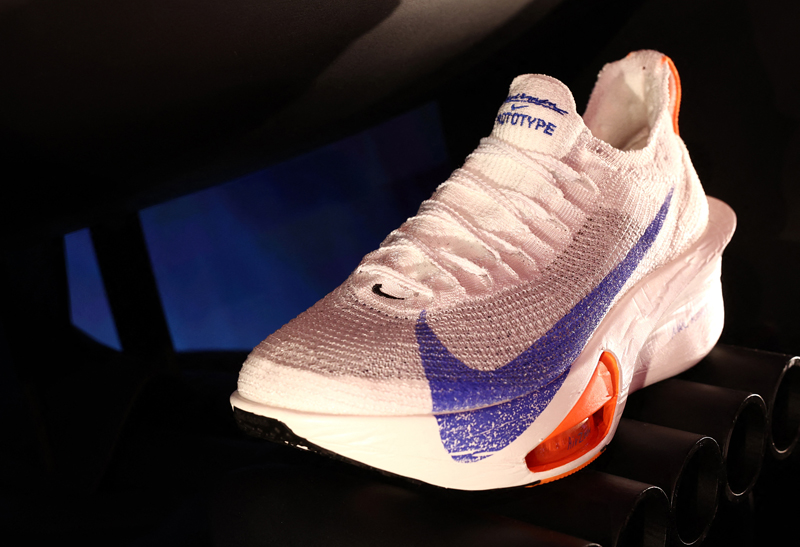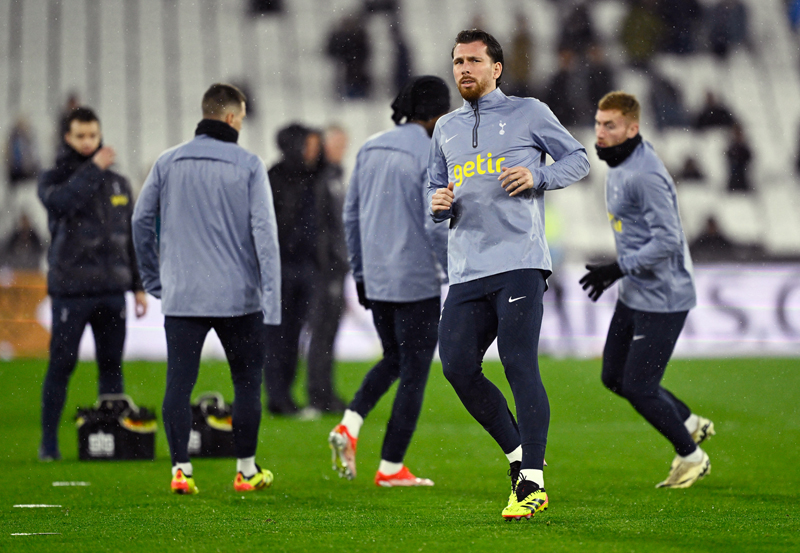A number of people buy their running shoes to make a fashion statement. Well, if you do, your bank statement could include some unwelcome physio bills. Running shoes are designed to provide cushioning and support, for different running styles – specifically, the way your feet strike the ground. Basically, there are three type of foot-strike: neutral, pronating and supinating. And for each of these there is a specific type of running shoe that is designed to correct this – with correction, the shoe adjusts the foot-strike so that the impact forces that travel up through your body are better transmitted and injury potential reduced.
I visited Asics’ flagship store in London to find out more. They’ve got a laser foot scanner (the only one in Britain, apparently), which will measure your feet and look at your footprint. You then run on a treadmill whilst being filmed and your foot-strike is analysed. It turns out that I’ve got a neutral foot-strike – I sort of knew this, but it was good to see the motion of my feet striking the ground as I was running, and be able to look at the force angles as they interact through the feet, legs and spine. I’m one of the 20-30% of runners who have a neutral foot-strike. If you over-pronate (ie, on foot-strike, your foot turns too much inward from the body’s centre line), then – depending on the degree of over-pronation – you need a support or motion control shoe to control this. These shoes will minimise your injury risk. Most runners (approximately 50-70%) pronate mildly or severely. The 3% of those who supinate (under-pronate) require a shoe that offers cushioning and flexibility. The foot exhibits little or no inward roll and this reduces shock absorbency. If you pay the £20 required for the foot scan and analysis at the Asics store, this is then deducted from the price of the ‘right’ Asics shoes for you.
Although it’s only Asics that offers this specific service, many other specialist running shops and other shoe brands will be able to provide analysis of your foot-strike, using various (if not so advanced) technologies.
(The Asics store is in Argyll Street, London W1, just around the corner from Oxford Circus.)
Getting the best running shoes for you – further considerations
Shoe manufacturers are now beginning to make it easier to work out which shoes are most suitable for you. For example, their catalogues often indicate what type of runner the model suits. However, it can still be confusing, so hopefully the information provided here will make choosing easier.Further tips: Here are some more tips to help you choose, use and maintain your running shoes:
- When buying new shoes, try on pairs later in the day rather than first thing in the morning – your feet swell during the day, so you’ll get a better sense of fit and comfort then
- Find the brand that suits your running style and gait and don’t be led by fashion. Although adidas and Nike may be more fashionable, other brands such as Asics and New Balance may actually be better for running in
- Buy shoes that provide room for your feet to move in the toe box (front of shoe). Failure to do so could result in damage to your toes and, in particular, your toenails
- Racing flats can sound tempting – these are lightweight shoes with stripped-away cushioning and protection designed to help you reduce your running times. They tend to be more suited to lighter weight runners with neutral foot-plants, and top-level performers. But if you’re more than 9st and running a marathon with modest time ambitions, then you’re much better off wearing normal shoes that offer the right foot correction and cushioning. Nike designed a shoe known as the Mayfly, which weighed in at 4.8oz and was designed to fall apart after a marathon (well, after 60 miles actually). Great if you’re sponsored and a sub-2 hour10 male; not so good if you are more 4 hours and sponsored by your wages!
- Do not use new shoes in a race – even if they’re a model with which you and your feet are familiar. You may start off looking cool, but new shoes need time to get bedded in, and 10 miles into a marathon could be an annoying time to discover that they are causing blisters
- Don’t put your shoes in the washing machine to clean them. The heat and the pounding will damage the midsole – and, therefore, the shoe’s cushioning – and reduce shock absorbency.
- Check your shoes regularly to make sure they are offering maximum protection. There is a simple test that you can do to ascertain this – the press test.
Gaining a further insight into your running shoes
The cushioning materials used in running shoes vary considerably. The material usually used is EVA (ethylene vinyl acetate). The manufacturers then add their ‘own’ technology, such as air (always wondered about that one!), gel, or springs (Nike Shox, for example). Your running shoes need to be cushioned enough to support your weight and provide a good energy return as you land and push off into each and every stride. The individual properties of shoes will vary – as indicated, you should select the best ones for your running style and your weight. However, as a general guide, a shoe that is too soft will not have good wear properties and will be too absorbent, while a hard midsole shoe will have much reduced absorbency.The press test
EVA will begin to lose its resilience as the miles pass. If you press on the midsole, fine lines will appear. Looking at what happens when you press into the midsole can tell you a great deal about the state of your shoes. Here’s what to do: with your thumb, push on the outsole, upward into the midsole. You’ll see lines appear as the midsole compresses. As your shoes get older you’ll find you’ll need much less pressure to compress the midsole and produce the lines. When your shoes are on their last legs (or past them), heavy lines will appear when you press into the midsole, and the process of doing so will require little effort.It’s very difficult to specify how many miles a pair of shoes ‘should’ last. Some say no more than 500 miles, but it’s probably going to be less rather than more than this if you are a distance or ultra-distance athlete. If you’re an elite marathon or ultra-distance athlete you could need a new pair of shoes every three to four weeks
Useful links
www.shoeguide.co.uk - reviews all the top shoes on the market and has a ‘Find a shoe wizard’ search button
Nike: www.nike.com
Adidas: www.adidas.com
Asics: www.asics.co.uk
New Balance: www.newbalance.com










